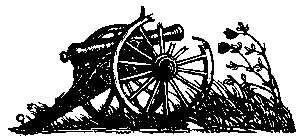 NE of
the most delightful ways of utilizing the woodblock is in the making
of holiday greetings. I have always thought there is a homelier,
friendlier 'feel' to the wood than to any other medium. The cuts are
almost as easily made as a drawing, and are easily printed. While it
would be difficult, lacking a press, to print them with a burnishing
stick on the heavy stock of the ordinary card, it would be no trouble
to burnish off proofs on thin paper, and 'tip' them on heavy cards.
In fact, one could make miniature matted prints of them.
NE of
the most delightful ways of utilizing the woodblock is in the making
of holiday greetings. I have always thought there is a homelier,
friendlier 'feel' to the wood than to any other medium. The cuts are
almost as easily made as a drawing, and are easily printed. While it
would be difficult, lacking a press, to print them with a burnishing
stick on the heavy stock of the ordinary card, it would be no trouble
to burnish off proofs on thin paper, and 'tip' them on heavy cards.
In fact, one could make miniature matted prints of them.
There have been so many holiday designs issued that it would seem impossible to create an original good one. It was roughly estimated fifty years ago that English greeting card publishers had issued over 200,000 different designs since the first one appeared in 1846. By now the number must be close to 200,000,000. The trick is to evolve new designs. The stars of Bethlehem, Nativities, Christmas trees, Santa Clauses, minstrels, overflowing stage coaches, three wise men and the little homes in the West have all been worked pretty well to extinction. Some of the old themes could be modernized to the overflowing aeroplane, the drugstore minstrels tooting saxophones, or the guitar playing beggars on business streets just before the holidays. The barber-shop quartet is another possibility. There is usually another slant to be had of the old stuff that may be kept to not inappropriate bounds. Even if the bounds are exceeded - who cares, or who knows the difference? A few years ago a brilliant business man developed the notion of utilizing the charms of the elephant in candy form for the Easter trade - very evidently not the work of a Christian gentleman - and from the looks of things the idea made him a lot of money.
There is the possibility of building up a little business in greetings of local subjects, on the principle of the picture post card. The woodcut post card by the way, is well exploited in European countries. Possibilities are the local church under cover of snow, the home of a local celebrity, any historical edifice, or an historical tree - all with a suggestion of Christmas about them, a spray of holly, or a frame with a holly motif. Such things might not only appeal to the home folks, but the locality's emigrants and visitors as well. And not only that, it is a step in regional development.
If it is contemplated to dispose of stock to dealers one must reckon on the customary discount of 50 per cent. For various reasons the profit on greetings must be at least 100 per cent.
There is not only the possibility of making one's own design, for either private or public consumption, but of getting commissions from friends and townspeople for private ones. These ought to be as personal as a bookplate, as personal as a signature, if that were possible. Of course, no design can be more intimate than that one makes himself. Unless it reflects a personal note, the prospective sender of the greetings might as well go to his stationer and arrange to have his name printed on a hundred or so cards, and let it go at that. These will have even less feeling, but ho is spared the extra expense and trouble.
There appears to be no great desire on the part of greeting card publishers to issue cards of any great artistic merit, judging by the prices they are willing to pay for designs. It may be worth noting that in 1882 an English firm of greeting card publishers paid above $35,000 to artists for original ones - an amount that would be equivalent perhaps to $70,000 today. If you are offered $10.00 for a design - jump at it; it is high for the modern publisher.
Collecting greetings has been going on since the early 'nineties if not before. As objets d'art they are no worse than average bookplates, postage stamps or broadsides, or for that matter, Currier & Ives prints. Of course, one could scarcely collect all specimens of greetings; one would have to specialize. I would be inclined to go in for woodcut ones if I were collecting, or privately issued ones signed by the artists. But not all of them would be worth preserving either. Now is the time to start before it becomes a rich man's hobby. It is safe to predict that some modern ones, if not the very early ones, will rise in value.
It is also safe to predict something of a canonization by the greeting card publishers of either Sir Henry Cole, who commissioned the first published greeting, or of J. C. Horsley, who designed it. They started a tremendous business. The greeting publishers association no doubt will do something to perpetuate the memories of these men, perhaps something like holding a special centennial greeting-week some time before the close of the Christmas shopping period in 1946. That is not so far away any more, and preparations may be expected to be got under way to make the public greeting-week minded, just as business men have made us week minded in other respects.
